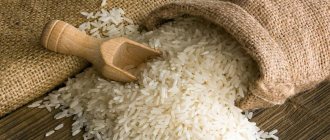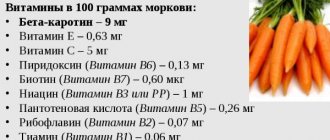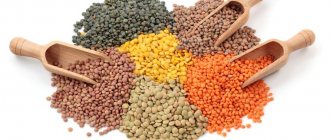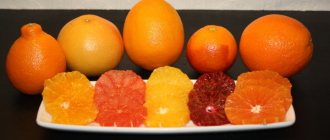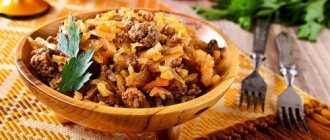Cabbage or cabbage is an agricultural crop that is one of the most important vegetable plants due to its medicinal properties and nutritional value. Cabbage, whose calorie content is quite low, is one of the most important ingredients in medical diets and nutrition systems for effective weight loss. Dietary dishes made from cabbage are tasty, nutritious and rich in vitamins, and due to their healing properties, they are included in the diet of patients suffering from gastrointestinal diseases. What are the beneficial properties of cabbage? How to cook cabbage for weight loss?
Biological description
White cabbage is a member of the cruciferous family. Its shape is round, the stem is tall, the leaves are dense, wrapped inward. This garden crop is grown in different parts of the world. It is eaten in any form: fresh, pickled, stewed, fried, boiled. A good harvest of cabbage is obtained in countries with a moderately cool climate.
The most common varieties of white cabbage are early, middle and late.
Content:
- Biological description
- Origin story
- Chemical composition and nutritional value
- Beneficial features
- Harm and contraindications
- White cabbage in folk medicine
- White cabbage in cooking
- White cabbage in cosmetic procedures
- Rules for selection and storage
Early cabbage varieties include Pharaoh, Golden Hectare, Aladdin, Nakhodka and Yaroslavna. Popular varieties of medium cabbage include Podarok, Slava, Belorusskaya and Megaton. Late cabbage varieties include Snow White, Sugarloaf, Valentina, and Extra.
It is noteworthy that early varieties of the crop are poorly stored due to their delicate leaves. Therefore, early-varietal cabbage is not prepared into preparations, but is immediately consumed as food. Medium-grade cabbage is used to prepare dishes for short-term storage. Late varieties of cabbage are used to make preparations for long-term storage. Fresh fruits can be stored until the end of winter, retaining all their beneficial properties.
Good Dutch varieties occupy a special place. They are perfect for the local climate, high-yielding, juicy and delicious in taste. Popular varieties include Bronco, Musketeer, Ronco, Bingo and Python.
Is it possible to eat the stalk?
This issue is very controversial, since it is this part of the vegetable that is capable of accumulating nitrates, which can cause poisoning of the body.
But, at the same time, the stalk contains a sufficient amount of Vitamin C, magnesium, potassium and calcium. Therefore, if you have cabbage from your own garden, then why not nibble it to strengthen the body.
In any case, experts advise eating only small stalks from a young head of cabbage.
Good prevention of diabetes development
Origin story
White cabbage can be considered one of the oldest types of garden crops. According to research by paleobotanists, it was grown on the Mediterranean coast about 4,500 years ago. On the territory of Ancient Iberia, wild cabbage was first grown. This culture then spread to Ancient Greece, Ancient Rome and Ancient Egypt. Later, residents of Transcaucasia and the Balkans appreciated its benefits and taste. Presumably, sauerkraut began to be fermented in the 9th century. Since then, travelers for a long time took sauerkraut with them on the road, along with honey and salted mushrooms. It is noteworthy that the ancient reference book of Kievan Rus “Izbornik Svyatoslav” of 1076 described the correct storage of cabbage as a food product.
Does kelp contain Omega 3?
Seaweed contains large quantities of Omega-3 and Omega-6 polyunsaturated fatty acids, which prevent the development of atherosclerosis. Eating a small amount of brown algae every day can prevent heart attacks, strengthen blood vessels and reduce cholesterol in the blood. Daily consumption helps fight hypertension.
The human body is not capable of producing polyunsaturated fatty acids, so it is necessary to obtain them through foods containing them. Therefore, if there is a shortage of these substances, it is recommended to include dishes with sea ginseng in your diet every day.
Chemical composition and nutritional value
White cabbage contains a whole complex of nutrients and vitamins. The calorie content of white cabbage is 27 kcal per 100 grams of fresh product. The nutritional value of the product includes a high content of proteins, fats, carbohydrates, dietary fiber, organic acids, vitamins and micro- and macroelements. The vegetable contains glucose and fructose, which are considered easily digestible carbohydrates. They help saturate the body with energy. Pectin substances in the gastrointestinal tract are processed into a kind of gel that envelops the walls of the stomach, which prevents toxins from entering the circulatory and lymphatic systems. The product contains a full complex of vitamins B, , , , , and.
The vitamin U content in the vegetable helps restore the gastrointestinal mucosa after damage from peptic ulcers. This valuable vitamin was discovered in the 40s of the last century, when the composition of cabbage juice was studied. Interestingly, the name of the vitamin comes from the word ulcus, which translates as “ulcer.” Vitamin U also takes part in the synthesis of vitamin B4. White cabbage holds the record for the content of vitamin U, which is not synthesized in the body. When exposed to high temperatures, this vitamin is destroyed.
Can it be frozen in the freezer?
The vegetable can tolerate low temperatures. However, this does not mean that the vegetable should be stored in the freezer.
After defrosting, almost all the taste and crunch will be lost, but the beneficial properties will be preserved almost completely. Such leaves will only be suitable for preparing vegetable soups or stews, as well as cabbage rolls.
If you want to store the leaves in the freezer, then after trimming them, rinse them thoroughly, put them in a bag and put them in the freezer whole.
This vitamin salad can be prepared all year round.
Beneficial features
White cabbage has many beneficial properties. This unique product is able to support immunity for a long time. The content of ascorbic acid in the vegetable protects against malignant tumors in the body. Ascorbic acid retains its properties during heat treatment. A lot of it is also preserved in fermented form. Folic acid, contained in green cabbage leaves, regulates metabolic processes in the body, improves the functioning of the thyroid gland and genital organs. Folic acid is especially useful and important in the diet of women.
Tartronic acid has a beneficial effect on the gastrointestinal tract, improving metabolism. In addition to choline, it does not allow cholesterol to accumulate on the walls of blood vessels and leads to the normalization of fat processes in the body. Therefore, nutritionists advise including vegetables in the daily diet for those who want to lose noticeable weight. Tartronic acid is present only in fresh cabbage. Fructose energizes the body, the amount of which in cabbage is higher than in other vegetables. Lactic acid, which is formed as a result of fermentation of the product, has a beneficial effect on the intestinal microflora. As a result of exposure to lactic acid, the intestinal microflora is normalized in the body and putrefactive processes in it are eliminated. The phytoncides contained in the vegetable have a detrimental effect on Staphylococcus aureus.
The fiber content in the vegetable helps improve motor activity in the intestines and develop beneficial microflora in it.
Constant consumption of white cabbage benefits the body:
- strengthens the immune system;
- stabilizes acid-base balance;
- prevents the development of atherosclerosis;
- improves metabolic processes;
- removes toxins from the body;
- moisturizes the skin;
- removes excess fluid from the body.
Sauerkraut retains its beneficial properties and perfectly helps with dysbacteriosis and cleanses harmful microorganisms.
Mineral composition
The ratio of minerals (macro- and microelements) contained in fresh cabbage is presented in the table using diagrams.
| Minerals, content | Share of the daily norm for 100 g | |
| Calcium | 40.0 mg | 4,0% |
| Iron | 0.5 mg | 4,7% |
| Magnesium | 12.0 mg | 3,0% |
| Phosphorus | 26.0 mg | 3,7% |
| Potassium | 170.0 mg | 3,6% |
| Sodium | 18.0 mg | 1,4% |
| Zinc | 0.2 mg | 1,6% |
| Copper | 0.0 mg | 2,1% |
| Manganese | 0.2 mg | 7,0% |
| Selenium | 0.3 mcg | 0,5% |
| Fluorine | 1.0 mcg | 0,0% |
Content
Harm and contraindications
White cabbage brings great benefits to the body, however, despite this, it has some contraindications. First of all, it is contraindicated to consume a lot of cabbage for people who have increased acidity of gastric juice, as well as for those who are prone to indigestion, colitis and enteritis. Excessive consumption of this raw vegetable may result in bloating, nausea, gas, and heaviness in the stomach. The vegetable is contraindicated in patients with the acute stage of myocardial infarction.
Pregnant women should consume small amounts of fresh vegetable due to the fact that it stimulates flatulence. Conversely, it is recommended to consume sauerkraut daily in winter (about 200 grams).
Young mothers often have a question about whether white cabbage can be given to a small child. It is very useful to give cabbage to children, but it must be introduced into the menu gradually, starting from 2 years. Young children are not recommended to eat a lot of sauerkraut or salted cabbage, so as not to disrupt kidney function. When feeding infants, the effects of overeating can be transmitted through mother's milk.
White cabbage can be harmful if its stalk is consumed raw. Nitrates accumulate in the stalk, which are absorbed by the vegetable during ripening. Therefore, nitrates, sodium salts and cadmium can enter the body. Nitrates are usually hidden in the stalk and upper leaves of the vegetable.
How to choose and how to store
You can get the maximum benefit from cabbage only with the right choice of crop. You should not buy too large heads of cabbage.
It is optimal to choose medium-sized vegetables. You cannot purchase cabbage with rotten areas on the leaves. The cabbage cut must be white.
In its entirety, cabbage is stored in the refrigerator or cellar (if available). So it will retain its properties for 6 months. But the temperature should not be higher than 0 degrees. At temperatures above 4 degrees, cabbage begins to deteriorate.
White cabbage in folk medicine
In folk medicine, cabbage leaves are widely used to treat various diseases. Our ancestors often applied them to wounds, inflamed areas and bruises, and protruding veins. Night compresses help with this, they relieve swelling and pain symptoms.
Cabbage juice is an effective remedy. It heals duodenal ulcers, cleanses the body and helps reduce weight. A side effect of its use may be high gas formation. This is explained by the fact that the juice, as a result of a chemical reaction, breaks down rotting products in the intestines. Therefore, after drinking juice, there may be an increased amount of gases, as a result of a large number of accumulated toxins and rotting products. In turn, enemas will help remove gases and further cleanse the intestines.
Cabbage and carrot juices help cleanse the oral cavity of infections leading to periodontal disease. Homemade cabbage juice cures constipation, which often leads to skin rashes. Elimination of constipation leads to the disappearance of skin rashes. For the treatment of chronic gastritis with low acidity, liver and spleen diseases, it is useful to drink 0.5 glasses of warm juice an hour before meals. The juice is stored in the refrigerator for no more than 2 days.
When diluted with sugar, cabbage juice is an excellent remedy for a hoarse voice and chest cough. For treatment you need to take 1 teaspoon 2-3 times a day. If you mix the juice with honey, you get an effective remedy for combating respiratory diseases.
Sauerkraut juice is useful in the treatment of hemorrhoids. For treatment, you need to take 0.5 cups half an hour before meals. Gradually you need to increase the amount to 5 glasses per day. The duration of treatment is 3-4 weeks.
Eating cabbage gives good results in the treatment of gout. It is consumed fresh in salads and fresh leaves are additionally applied to pain points. Fresh leaves are also applied to sore spots for eczema, headaches, radiculitis and burns. It is effective to apply leaves with grated laundry soap to affected areas for osteochondrosis. For cancer of the stomach and intestines, you need to take a mixture of cabbage roots and seeds - 1 tablespoon is poured into a glass of hot boiled water and boiled for 10 minutes. After an hour, filter and drink 3 times a day. For liver diseases, drink 0.5 cups of sauerkraut brine with tomato juice. To treat rickets in children, a decoction of cabbage, carrots and beets is used.
Dietary cabbage dishes
Thanks to cabbage's taste, calorie content, ease of preparation, shelf life and high content of nutrients that remain in cabbage for quite a long time, this vegetable has taken one of the leading places in dietetics. Cabbage is consumed fresh, boiled, baked, stewed, fried, pickled, pickled, and is also used in cooking as a filling. For the diet, cabbage, the calorie content of which directly depends on the method of its preparation, is recommended to be consumed raw or boiled, as well as pickled or stewed.
How many calories are in stewed cabbage? There are several ways to prepare dietary cabbage dishes, including stewing. When vegetable fats are added when stewing cabbage, its calorie content increases to 118 calories. When animal fats are added to cabbage, its calorie content can reach up to 168 calories per 100 g of product. The most optimal way to prepare stewed cabbage is to add 1 tablespoon of vegetable oil (preferably olive) and 100 ml of water, brought to a boil, as well as spices, salt and sugar. The cabbage is stewed until done. When preparing cabbage in this way, you don’t have to worry about how many calories are in stewed cabbage, and consume the dish without significant restrictions. Some recipes recommend adding chicken broth to cabbage instead of water, which will significantly increase the calorie content. With this method of preparing cabbage, the calorie content reaches 130 calories per 100 g of finished dish.
Dishes made from fresh cabbage, the calorie content of which is kept low, include various salads, for which sauerkraut is also used. The calorie content of such a dish will vary depending on additional ingredients: vegetables, meat, dressings. To maintain a minimum level of calories in sauerkraut, it is recommended to consume it with a small amount of vegetable oil. Sauerkraut, whose calorie content is kept at an extremely low level, is an irreplaceable source of vitamins and valuable nutrients for the winter. This dietary cabbage dish will help diversify the diet of any diet without violating the daily calorie limit.
White cabbage in cooking
White cabbage is very popular in cooking. It is used to make delicious cutlets, soups, borscht, pies, dumplings, cabbage rolls and pancakes. It is eaten in salads, fermented, pickled, boiled, steamed, fried, baked and stewed. It is one of the best and useful preparations for the winter.
In cooking, there are several rules for properly cutting this vegetable. Leaves are removed in several ways:
- cut out the stalk and manually cut the vegetable;
- blanch;
- Place the cabbage in the microwave for 5 minutes and disassemble the leaves.
Separately, it is worth noting about the preparation of fermented product. If cabbage radically changes its taste, but is still crunchy, then it is better to eat it in a salad. If it has changed color and structure, then it is better to add it to the borscht. In this state, the acid in the vegetable goes well with the sweet beets.
Preparing pickled cabbage is very easy. For this you need 2 kilograms of cabbage, a head of garlic and 2 carrots. Dilute 1/3 cup of apple cider vinegar in a liter of water, add 2 tablespoons of salt, a glass of granulated sugar, bring to a boil and pour in chopped vegetables. Leave in a warm place for 6 hours, then put in the refrigerator.
Cabbage leaf face masks: use for cosmetic purposes
The vegetable has rejuvenating properties. A cabbage-based mask helps even out skin tone.
Popular recipes:
- From pigment spots. Corn oil and chamomile infusion (20 grams of mixture per 200g of boiling water) are added to the crushed leaves. The mixture is applied to the face for 5 minutes, then washed off with water without soap.
- Whitening. 200 g of vegetable pulp is mixed with whipped egg white. Apply to facial skin for 20 minutes. The procedure is repeated daily.
White cabbage in cosmetic procedures
In cosmetology, the use of cabbage is indispensable at home. Its leaves and juice are used to whiten facial skin, strengthen hair and care for hands. To prepare a face mask, you need to take 2-3 raw vegetable leaves and pour milk (10 ml) over them, cook until soft. Make the resulting mass homogeneous and apply to the face before going to bed for 15 minutes. To strengthen hair, take cabbage, spinach and lemon juices in equal parts. This mixture is rubbed into the hair roots for 7 days before bedtime. A famous French recipe for hand care includes sauerkraut juice. It is heated and applied to the hands, then washed off and a nourishing cream is applied.
Salad with cabbage and corn for daily use
The salad is light and tasty. You can eat it every day. The dish does not contain mayonnaise, so it is ideal for weight watchers.
Composition of ingredients
The product contains the following products:
- young cabbage - ¼ of a medium head of cabbage;
- chicken eggs - 3 pcs.;
- hard cheese - 100 g;
- corn - 200 g;
- cherry tomatoes - 7 pcs.;
- salt, black pepper, sesame seeds - according to taste preferences;
- sour cream 10% - 2 tbsp. l.;
- mustard - 2 tsp;
- raw egg yolk - 1 pc.
Step-by-step cooking process
To prepare the dish correctly, you must follow the instructions:
- The cabbage needs to be peeled, washed, chopped finely, and placed in a deep bowl.
- It is recommended to divide the tomatoes into quarters and add them to a bowl.
- Next, boil the eggs and cool. The protein needs to be cut into cubes. It's better to leave the yolk for now. It will come in handy later.
- The cheese must be grated and added to the bowl. Next you need to add canned corn without brine.
- After all the main ingredients are chopped, you need to make the dressing. The yolk should be crushed by hand. It is recommended to leave a teaspoon of yolk crumbs in a plate to decorate the salad. The rest should be added to sour cream and mustard. The dressing should be mixed well so that the mass is homogeneous.
- Next, the dressing is added to the salad, spices and salt are added, and everything is mixed.
What can I add?
Instead of cherry tomatoes, you can use plain tomatoes. It is recommended to cut them into large slices. Tomatoes can also be pitted. It is allowed to add sesame seeds as a decoration when serving.
How to serve a dish
The dish is served on a plate or in a salad bowl. The top of the salad is decorated with crumbled yolk and herbs.
Healthy and low-calorie salads
In winter and early spring, fresh cabbage salads should be included in the diet of everyone who cares about their health and their figure. With a low calorie content, a raw cabbage salad will give you a feeling of fullness.
Ingredients of the most popular fresh cabbage salad:
- white cabbage (0.4 kg)
- carrots (100 g)
- table vinegar 9% (50 ml)
- salt (to taste)
- sugar (1 teaspoon)
The cabbage is finely chopped, grated carrots are added. Everything is salted and filled with vinegar, previously mixed with sugar. The salad should be allowed to brew before serving (about 20 minutes). A serving of this salad (100 g) contains about 37 kilocalories.
The famous cleansing salad panicle will give a brilliant effect, which will help remove waste and toxins from the body, remove swelling, improve the condition of the skin and, of course, lose weight. Here is its composition:
- white cabbage (0.4 kg)
- carrots (200 g)
- lemon juice.
Shred the cabbage, add grated carrots, and season with lemon juice. A serving of this salad (100 g) contains about 29 kilocalories. You can add beets to the salad.





